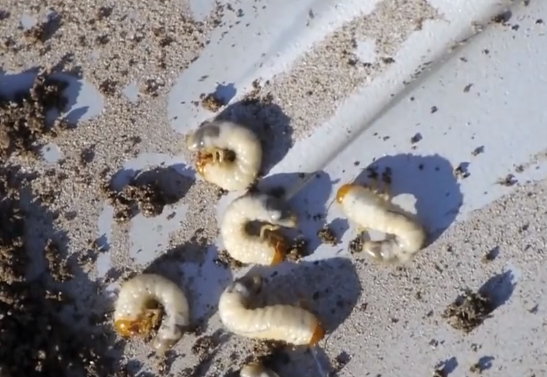Plant maintenance is fraught with obstacles and challenges that are more or less easy to overcome. This is especially true when pests invade and wreak havoc! Indeed, phytophagous insects are not rare. This term refers to small pests that attack fruits, leaves, bulbs and other tubers. Among them, we find for example weevils that attack seeds, aphids that love plant sap or even soil flies.
But grubs are also completely included in this category. However, grubs are often appreciated in the garden because they aerate the soil. They also contribute to the ecosystem. But here, these whitish beetle larvae are the sworn enemies of the garden and the vegetable garden!
Contents
Why are grubs a problem?
The grubs come to lay their eggs in warm, loose soil. Then, the eggs develop in the soil to reach the larval stage. During this life cycle, chafer larvae become very voracious.
They invite themselves into the compost heap and also attack ornamental plants, rose bushes and other plants in the garden while the adult beetles invite themselves onto fruit trees. You can recognize them by their slower growth and yellowing plants. If gardeners don’t do anything about the damage caused by the beetle larvae, the damaged plantings eventually die!
This is also bad news for the vegetable garden, as they love the tubers and roots of various plants (perennials, potatoes, carrots, shrubs, turnips, beets…). On young crops, these bugs can wreak havoc! Indeed, these little gnats cut the collars and roots of young plants. As a result, the latter do not have time to develop. The more developed plants end up being eaten away. They have not stolen their pest status, hence the importance of biological control!

To get rid of grubs without breaking your head, here is the simplest technique.
An effective method is to use the sulfur in our matches wisely. To do this, simply plant matches upside down in the soil as if you were chasing gnats away from your plants. Friend gardener, do not put more than four or five! That will be more than enough. As you water, the sulfur will be released into the soil and the grubs will know they are no longer welcome. This way, you will have saved your crops without trying too hard or using chemical pesticides against the voracious grubs.
Other methods to consider
You can pick them up and put them on a plate to serve as a meal to their natural predators. This is typically the type of food that hedgehogs and birds will enjoy. On the other hand, let the moles settle in your land. These small mammals will increase your chances of eliminating them! Also, a dense and high lawn is not good for the laying of adult insects. Finally, it is possible to plant clover (and other ground cover species that resist them well) or plants that are toxic to them such as geranium or larkspur.

